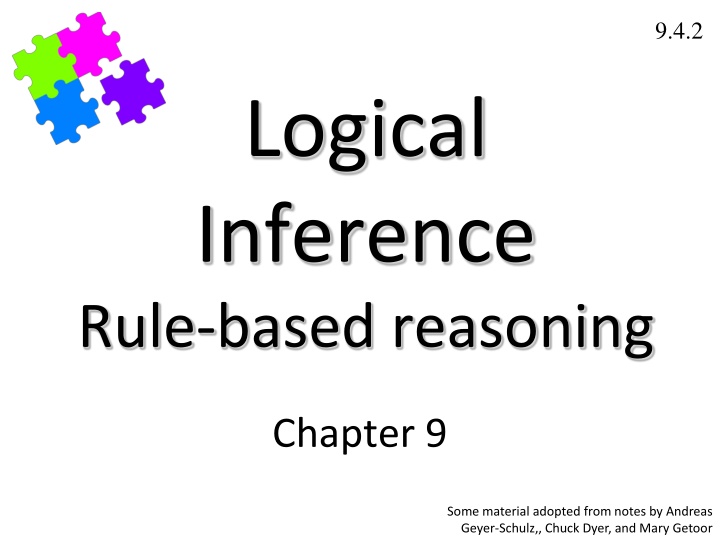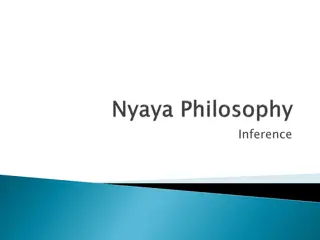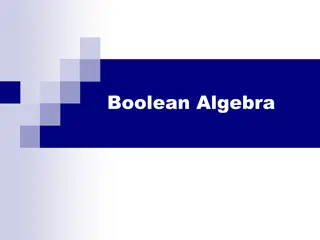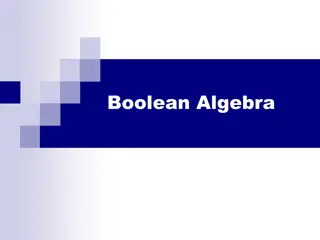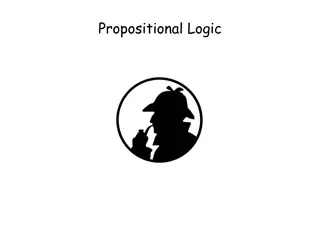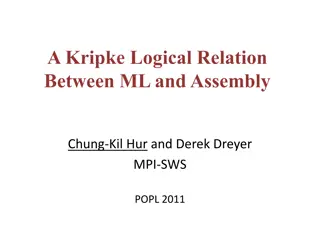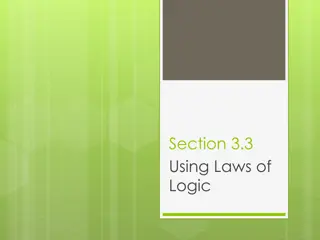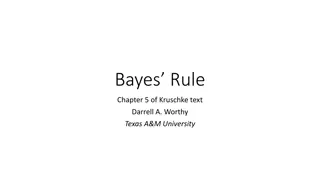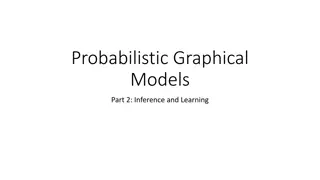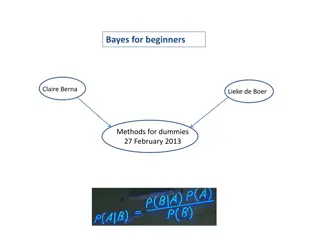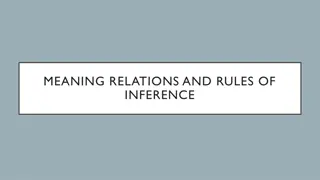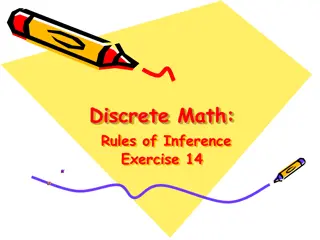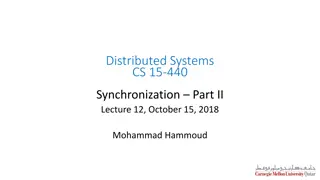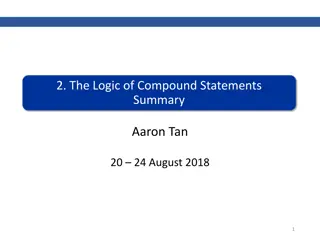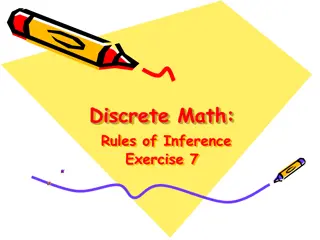Logical Inference Rule-based reasonsing
Automated inference in First-Order Logic (FOL) presents unique challenges due to variables with infinite possible values and semi-decidability. Explore logical rules like Generalized Modus Ponens and the use of Horn clauses in reasoning. Understand the role of quantifiers and definite clauses in logical inferences.
Download Presentation

Please find below an Image/Link to download the presentation.
The content on the website is provided AS IS for your information and personal use only. It may not be sold, licensed, or shared on other websites without obtaining consent from the author.If you encounter any issues during the download, it is possible that the publisher has removed the file from their server.
You are allowed to download the files provided on this website for personal or commercial use, subject to the condition that they are used lawfully. All files are the property of their respective owners.
The content on the website is provided AS IS for your information and personal use only. It may not be sold, licensed, or shared on other websites without obtaining consent from the author.
E N D
Presentation Transcript
9.4.2 Logical Inference Rule-based reasoning Chapter 9 Some material adopted from notes by Andreas Geyer-Schulz,, Chuck Dyer, and Mary Getoor
Automated inference for FOL Automated inference for FOL is harder than PL Variables can take on an infinite number of possible values from their domains Hence there are potentially an infinite number of ways to apply the Universal Elimination rule Godel's Completeness Theorem says that FOL entailment is only semi-decidable If a sentence is true given a set of axioms, there is a procedure that will determine this If a sentence is false, there s no guarantee a procedure will ever discover this it may never halt
Generalized Modus Ponens (GMP) Modus Ponens: P, P=>Q |= Q Generalized Modus Ponens extends this to rules in FOL Combines And-Introduction, Universal- Elimination, and Modus Ponens, e.g. given P(c) , Q(c) , x P(x) Q(x) R(x) derive R(c) Must deal with more than one condition on rule s left side variables
Often rules restricted to Horn clauses A Horn clause is a sentence of the form: P1(x) P2(x) ... Pn(x) Q(x) where 0 Pis and 0 or 1 Q Pis and Q are positive (i.e., non-negated) literals Equivalently: P1(x) P2(x) Pn(x) where Pi are all atomic and at most one is positive Prolog is based on Horn clauses Horn clauses are a subset of all sentences representable in FOL
Horn clauses 2 Special cases Typical rule: P1 P2 Pn Q Constraint: P1 P2 Pn false A fact: Q A goal: Q These are not Horn clauses: married(x, y) loves(x, y) hates(x, y) likes(john, mary) likes(x, y) hates(x, y) Can t assert/conclude disjunctions, no negation No wonder reasoning over Horn clauses is easier
Horn clauses 3 Where are the quantifiers? Variables in conclusion universally quantified Variables only appearing in premises existentially quantified Examples: parentOf(P,C) childOf(C,P) P C parentOf(P,C) childOf(C,P) parentOf(P,X) isParent(P) P X parent(P,X) isParent(P) parent(P1, X) parent(X, P2) grandParent(P1, P2) P1,P2 X parent(P1,X) parent(X, P2) grandParent(P1, P2)
Definite Clauses A definite clause is a horn clause with a conclusion What s not allowed is a horn clause w/o a conclusion, e.g. male(x), female(x) i.e., male(x) female(x) Most rule-based reasoning systems, like Prolog, allow only definite clauses in the KB
Forward & Backward Reasoning We often talk about two reasoning strategies: Forward chaining and Backward chaining Both are equally powerful, but optimized for different use cases You can also have a mixed strategy
Forward chaining Proofs start with given axioms/premises in KB, deriving new sentences using GMP until the goal/query sentence is derived The process follows a chain of rules and facts going from the KB to the conclusion This defines a forward-chaining inference procedure because it moves forward from the KB to the goal [eventually] Inference using GMP is sound and complete for KBs containing only Horn clauses
Forward chaining example KB: allergies(X) sneeze(X) cat(Y) allergicToCats(X) allergies(X) cat(felix) allergicToCats(mary) Goal: sneeze(mary)
Backward chaining Backward-chaining deduction using GMP is also complete for KBs containing only Horn clauses Proofs start with the goal query, find rules with that conclusion, and then tries to prove each of the antecedents in the rule Keep going until you reach premises Avoid loops by checking if new subgoal is already on the goal stack Avoid repeated work: use a cache to check if new subgoal already proved true or failed
Backward chaining example KB: allergies(X) sneeze(X) cat(Y) allergicToCats(X) allergies(X) cat(felix) allergicToCats(mary) Goal: sneeze(mary)
Forward vs. backward chaining Forward chaining is data-driven Automatic, unconscious processing, e.g., object recognition, routine decisions May do lots of work that is irrelevant to the goal Efficient when you want to compute all conclusions Backward chaining is goal-driven, better for problem-solving and query answering Where are my keys? How do I get to my next class? Complexity can be much less than linear w.r.t KB size Efficient when you want one or a few decisions Good where the underlying facts are changing
Mixed strategy Many practical reasoning systems do both forward and backward chaining The way you encode a rule determines how it is used, as in % this is a forward chaining rule spouse(X,Y) => spouse(Y,X). % this is a backward chaining rule wife(X,Y) <= spouse(X,Y), female(X). Given a model of the rules you have and the kind of reason you need to do, it s possible to decide which to encode as FC and which as BC rules.
Completeness of GMP GMP (using forward or backward chaining) is complete for KBs that contain only Horn clauses not complete for simple KBs with non-Horn clauses What is entailed by the following sentences: 1.( x) P(x) Q(x) 2.( x) P(x) R(x) 3.( x) Q(x) S(x) 4.( x) R(x) S(x)
Completeness of GMP The following entail that S(A) is true: 1.( x) P(x) Q(x) 2.( x) P(x) R(x) 3.( x) Q(x) S(x) 4.( x) R(x) S(x) If we want to conclude S(A), with GMP we cannot, since the second one is not a Horn clause It is equivalent to P(x) R(x)
